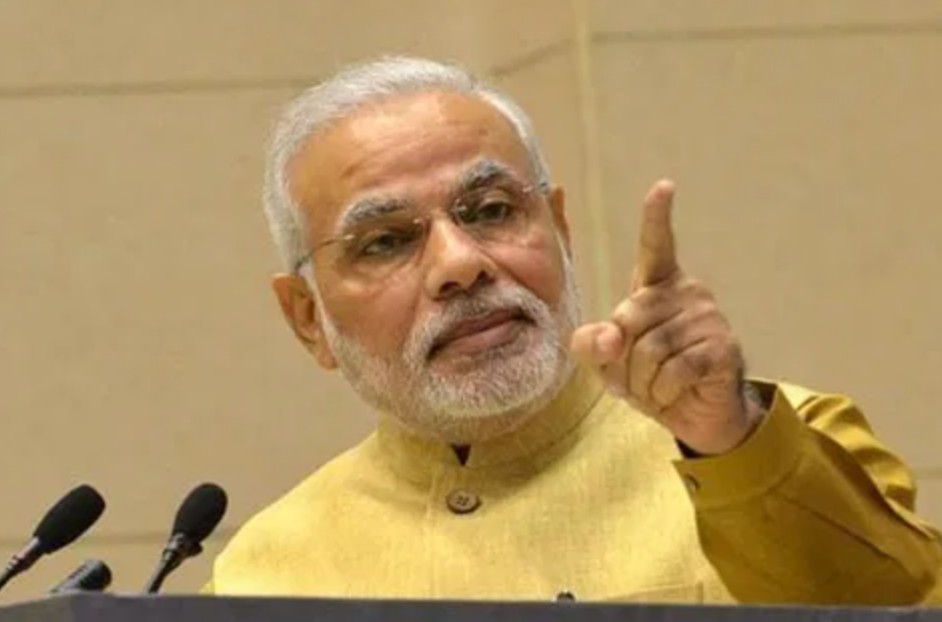His photograph and 115 posts made over the past five years have been deleted
Prime Minister Narendra Modi’s official page on Chinese social media website Weibo went blank on Wednesday with the removal of his photograph and all 115 posts made over the past five years.
Mr. Modi initiated the process to exit Weibo following the Union government’s decision to ban 59 Chinese apps. The government on Monday decided to impose the ban on the apps, including Weibo, citing threats to data security and the sovereignty of India.
This marks a sudden end to Mr. Modi’s “Weibo diplomacy” in China that was launched with much fanfare in 2015 as a means to directly communicate with the people of China before his first visit there as Prime Minister. His first message said, “Hello China! Looking forward to interacting with Chinese friends through Weibo”. The Indian Embassy said at the time this was “a first of a kind attempt by any leader across India.” Mr. Modi had 2.44 lakh followers.
On Tuesday, Mr. Modi’s photograph was removed from his official page, and only two posts of the 115 he posted over the past five years remained. Both had photographs of Mr. Modi with Chinese President Xi Jinping.
Posts removal
It took two days for the last posts to be removed. According to government officials handling the matter, the procedure to exit Weibo was “complex” for official and verified accounts such as Mr. Modi’s and an official process was initiated. The officials said the process was delayed “for reasons best known” to the Chinese side.
“Prime Minister Modi had 115 posts on Weibo. It was decided to manually delete them and after much effort, 113 posts were removed,” said a source. “There were two posts left where Prime Minister Modi and these are posts with photos with President Xi. On Weibo, it is difficult to remove posts with the photo of the Chinese President. Which is why, two posts still remained,” said a source.
PM was not very active on Weibo
Mr. Modi posted infrequently on Weibo, with 115 posts in five years, although his annual posts on the international day of yoga usually received wide attention in China. Among his most forwarded posts were his birthday greetings to President Xi conveyed every year.
On June 20, three statements by the Indian Embassy on the recent border tensions posted on its account on WeChat, another popular social media app, were removed by Chinese authorities. A message following the removal said the posts were taken down for violating regulations. Social media in China are subjected to extensive censorship regime. Among the foreign sites blocked in China are WhatsApp, Facebook, Twitter and YouTube.
Chinese reaction to apps ban
On Tuesday, China hit out at the move by India to block 59 apps. It described the action as “a deliberate interference in practical cooperation” between the two countries.
China’s State media warned that the move would bring economic repercussions, such as affecting outbound Chinese investment into India.
In separate statements issued by its Foreign Ministry and Embassy in New Delhi, Beijing called on India to review the move. “India’s measure, selectively and discriminatorily aims at certain Chinese apps on ambiguous and far-fetched grounds, runs against fair and transparent procedure requirements, abuses national security exceptions, and suspects of violating the WTO rules,” the Embassy said. “It also goes against the general trend of international trade and E-commerce, and is not conducive to consumer interests and the market competition in India.”
The ban was one of the most discussed topics on Chinese social media this week. In an editorial, the Communist Party-run Global Times slammed what it said was “a lacklustre explanation for the nonsensical move”. “If India’s sovereignty can be damaged by a handful of apps, just how vulnerable is it?” the paper said. “It was not long before Indians realised that turning nationalist rhetoric into action is more difficult, as there are no available and affordable alternatives to Chinese-made products such as smartphones, chemicals, automotive components and many other items… It seems that not only has the Modi government failed to rein in the rising nationalism among Indians, it has also yielded to domestic pressure and even encouraged such a boycott to escalate.”
Dip in investment
The newspaper said it had conducted a survey of experts who “predicted Chinese overseas direct investment (ODI) into India will drop sharply in 2020, with two experts forecasting a more than 50 per cent cut.”
“Bad feelings go both ways, and the chance for China-India relationship to pick up in the short-term is slim. Chinese investors are on the edge with risk-aversion instinct kicking in,” Qian Feng, director of the research department of the National Strategy Institute at Tsinghua University, told the paper, adding that the coming year would not only see a 50 per cent fall in Chinese investments in India, but would be “a turning point” in economic relations.
With inputs from The Hindu

